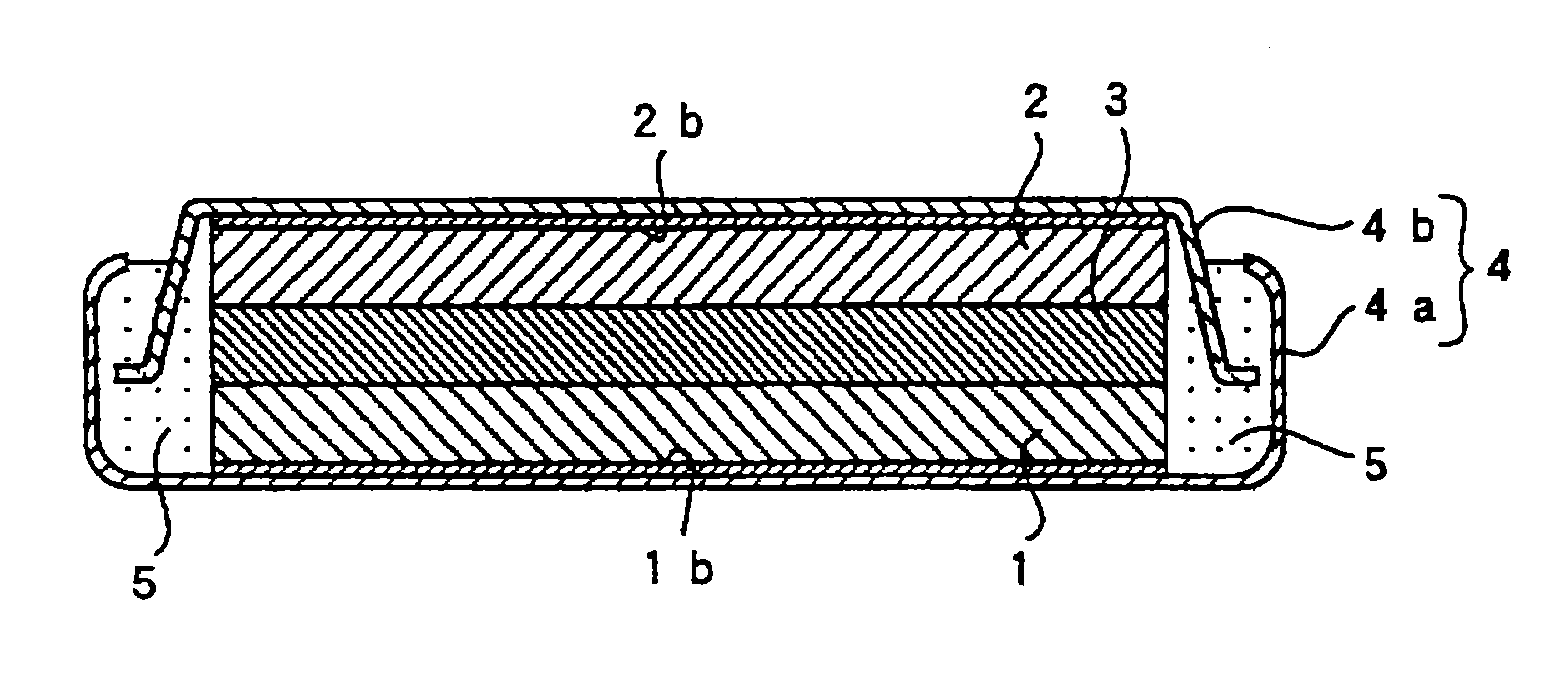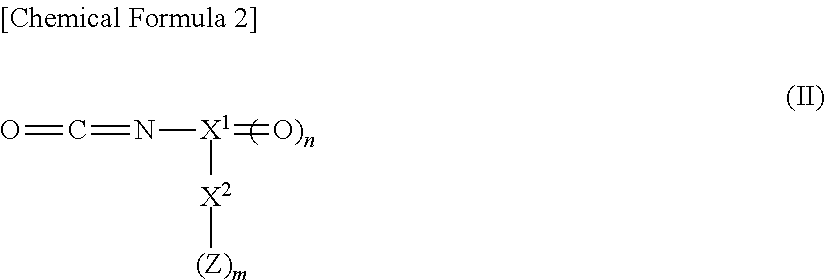Non-aqueous electrolyte secondary battery and non-aqueous electrolyte
a secondary battery and non-aqueous electrolyte technology, applied in the direction of non-aqueous electrolyte accumulator electrodes, non-aqueous electrolyte cells, electrical devices, etc., can solve the problems of deterioration of storage performance, deterioration of storage characteristics and cycle characteristics of batteries, and gradual decomposition of non-aqueous solvents, so as to prevent deterioration and expansion of anode active materials, improve charge-d
- Summary
- Abstract
- Description
- Claims
- Application Information
AI Technical Summary
Benefits of technology
Problems solved by technology
Method used
Image
Examples
example
[0135]In the following, the non-aqueous electrolyte secondary battery and non-aqueous electrolyte of the present invention will be explained concretely by referring to examples, and improvement in cycle characteristics in the non-aqueous electrolyte secondary battery of these examples will be clarified in comparison with comparative examples. It is to be understood that the present invention is not limited to these examples and any modification can be added thereto so long as it does not depart from the scope of the present invention. In the explanations of the following examples and comparative examples, each mark in the parenthesis “[ ]” is a mark indicating a corresponding part in the corresponding drawing.
examples 1 to 7
[0136]In Examples 1 to 7, an anode and a cathode, as well as a non-aqueous electrolyte, were prepared according to the method described below and a depressed, coin-type non-aqueous electrolyte secondary battery, as shown in FIG. 1, was prepared.
Preparation of Anode
[0137]In preparing the anode, RF sputtering (high-frequency sputtering) was conducted on the anode current collector consisting of an electrolytic copper foil (thickness of 18 μm; surface roughness Ra=0.188 μm) under the conditions of 100 sccm of sputtering gas (Ar) flow rate, room temperature of substrate (no heat applied), 0.133 Pa (1.0×10−3 Torr) of reaction pressure, 200 W of high frequency electric power, and a thin layer of anode active material composed of about 5 μm thickness of silicon thin layer was formed. Sccm shown above is the abbreviation of Standard cc min−1 and indicates a flow rate per 1 min, expressed in cc, at 0° C. and 1 atmospheric pressure.
[0138]Raman spectrometric analysis was performed on the silic...
PUM
| Property | Measurement | Unit |
|---|---|---|
| temperatures | aaaaa | aaaaa |
| temperatures | aaaaa | aaaaa |
| temperatures | aaaaa | aaaaa |
Abstract
Description
Claims
Application Information
 Login to View More
Login to View More - R&D
- Intellectual Property
- Life Sciences
- Materials
- Tech Scout
- Unparalleled Data Quality
- Higher Quality Content
- 60% Fewer Hallucinations
Browse by: Latest US Patents, China's latest patents, Technical Efficacy Thesaurus, Application Domain, Technology Topic, Popular Technical Reports.
© 2025 PatSnap. All rights reserved.Legal|Privacy policy|Modern Slavery Act Transparency Statement|Sitemap|About US| Contact US: help@patsnap.com



